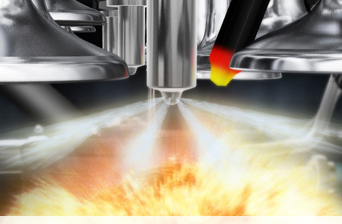Diesel and Biodiesel Lubricity
In modern diesel engines, the fuel also fulfils the role of lubricant in the fuel distribution system. Increasingly stringent environmental legislation forces engine manufacturers to decrease the combustion temperature to limit the amount of NOx’s and SOx’s that enter the environment. To achieve this better control of injection -and combustion processes are necessary, seeing that incomplete combustion at lower temperatures will cause soot and unburnt hydrocarbons to enter the atmosphere. The introduction of common rail diesel injection technology ensured that good control was possible, but at this stage the injection pressure is about 15 times higher than it was with conventional plunger injection. The clearances between the injection equipment have also been decreased to ensure that the pressure is not lost through the system. This has placed new demands on the lubrication properties of diesel.
South African environmental legislation limits the amount of sulphur in diesel to 500ppm. The sulphur is removed through a process of hydrotreating the crude oil fractions that are used to blend diesel. The problem is that this process also removes other naturally occurring lubricity enhancing components with the sulphur. As a result of this lubricity additives need to be added to the fuel. Biodiesel (fatty acid methyl esters) have very good lubricity, but have several other limitations.
Current/Previous projects
2008
Leenesh Moodliyar, Effect of Biodiesel Addition to Lubricity of Coal-Based Diesel
Final Year Project Report
2010
Dean Riley, Characterisation of components in diesel with good lubricity with special reference to chemical and physical surface interactions
Final Year Project Report
Noko Meso, Characterisation of components in diesel with good lubricity with special reference to electrical contact resistance (ECR) measurement
Final Year Project Report
Ryan Schultz, Viscosity of n-hexadecane as a function of shear rate, temperature, pressure and composition
Final Year Project Report
